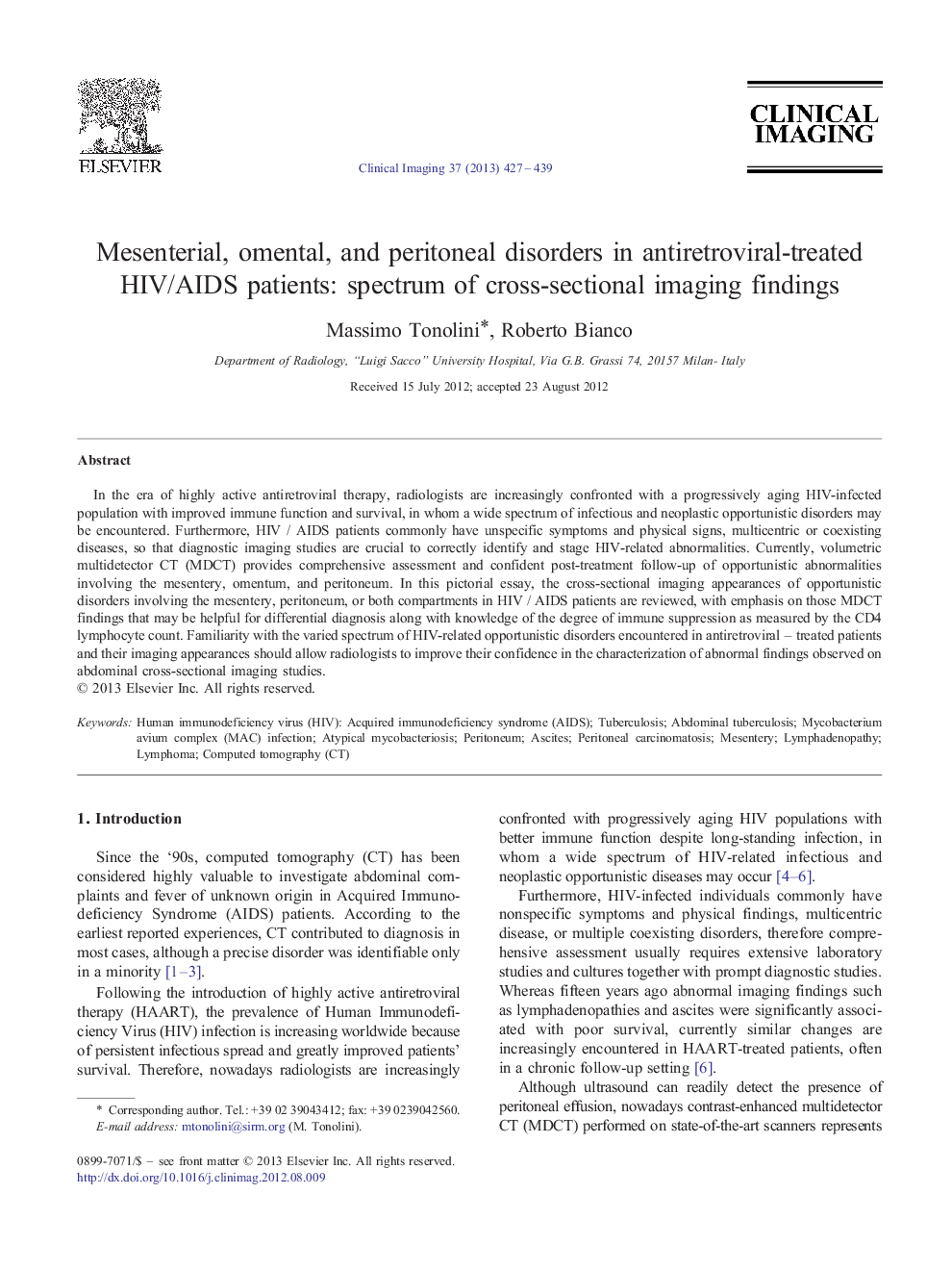| Article ID | Journal | Published Year | Pages | File Type |
|---|---|---|---|---|
| 4221657 | Clinical Imaging | 2013 | 13 Pages |
In the era of highly active antiretroviral therapy, radiologists are increasingly confronted with a progressively aging HIV-infected population with improved immune function and survival, in whom a wide spectrum of infectious and neoplastic opportunistic disorders may be encountered. Furthermore, HIV / AIDS patients commonly have unspecific symptoms and physical signs, multicentric or coexisting diseases, so that diagnostic imaging studies are crucial to correctly identify and stage HIV-related abnormalities.Currently, volumetric multidetector CT (MDCT) provides comprehensive assessment and confident post-treatment follow-up of opportunistic abnormalities involving the mesentery, omentum, and peritoneum. In this pictorial essay, the cross-sectional imaging appearances of opportunistic disorders involving the mesentery, peritoneum, or both compartments in HIV / AIDS patients are reviewed, with emphasis on those MDCT findings that may be helpful for differential diagnosis along with knowledge of the degree of immune suppression as measured by the CD4 lymphocyte count.Familiarity with the varied spectrum of HIV-related opportunistic disorders encountered in antiretroviral – treated patients and their imaging appearances should allow radiologists to improve their confidence in the characterization of abnormal findings observed on abdominal cross-sectional imaging studies.
